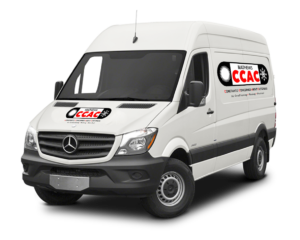If you are thinking about purchasing an air purification system for your home, it’s important to know what you’re buying. Buying the wrong equipment can cost you money, time on repairs or can even threaten your health. Americans spend as much as 90 percent of their time indoors so it’s important to find the products that will do the most to make the air you breathe safer for you and your family.
Air Purification Filter Types (and what they capture)
- High Efficiency Particulate Air (HEPA) Filters – 99.97 percent of all particles larger than 0.3 microns must be removed in order to earn the HEPA label. This is the best type of filter for allergy suffers and for most situations. The problem with these filters is they are very restrictive to air flow and must be a stand alone type filter.
- Ion and Ozone Generators – These two options generate charged ions which, when circulated through the air, combine with impurities such as dust, and cause them to cling to a nearby surface, thereby reducing the amount of particulates in your air. Many people do not like the smell of Ozone and the particles attaching to other surfaces can be quite a detriment over time.
- Charged Media Filters – able to capture tiny particles (as small as 0.1 microns) on their fiber filters. With a “net” that small, the filters do fill up and become less effective more quickly than HEPA filters. These filters also require much more maintenance and must be cleaned quite often to maintain their effectiveness.
- Activated Carbon Filters – not a viable option for air purification on their own, these filters are great for capturing some of the most common types of indoor air odors. Activated carbon filters actually absorb smells rather than just filtering the particles. The problem with these is that common sized filters do not allow space for enough carbon to last even a month so they do not work for a long enough period to be effective.
- Antibacterial and Germicidal Filters – great for eliminating some of the bacteria, pathogens and other common germs that cause many of our most common illnesses. Like the carbon filters they do not allow enough material to effectively control for any extended period of time.
- Electrostatic Precipitators – emit charged ions similar to the ion generators and ozone generators with one major difference: the particles are captured rather than forced to fall on another surface. These filters work in very dry climates, but in humid climates like ours the static charge required to activate the filters is not possible. They are also very restrictive to airflow.
- Pre-filters – remove larger particles before the final filters go to work on the much smaller particles. Pet hair and other visible pollutants are captured in these pre-filters to avoid clogging the filters.
Read more about air filters or contact us at CCAC, Inc.to learn more about which air purification system is best for you and your home.
Our goal is to help educate our customers about energy and home comfort issues (specific to HVAC systems). For more information about air purification and other HVAC topics, download our free Home Comfort Resource guide.
Mathews CCAC Air Conditioning and Heating services Corpus Christi, TX. Visit our website to see our special offers and get started today!












